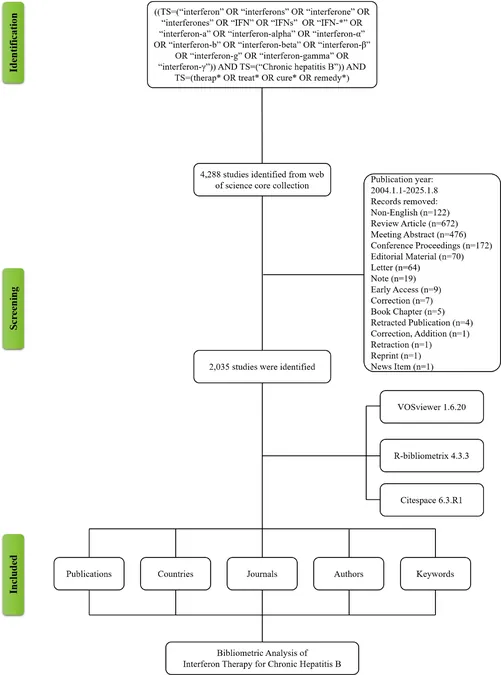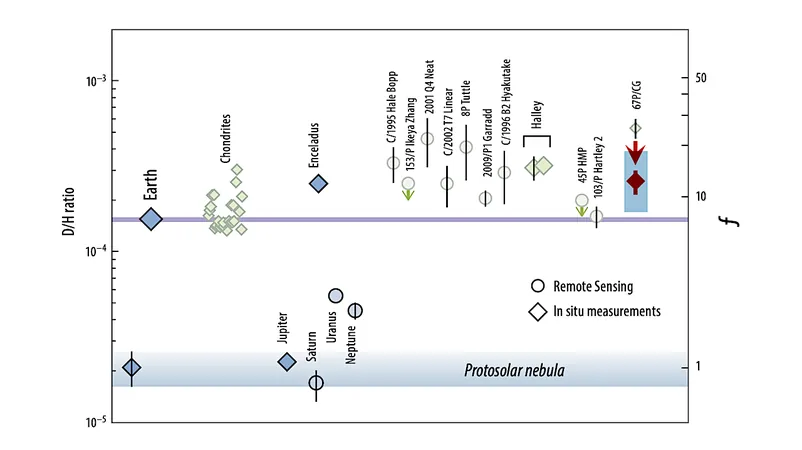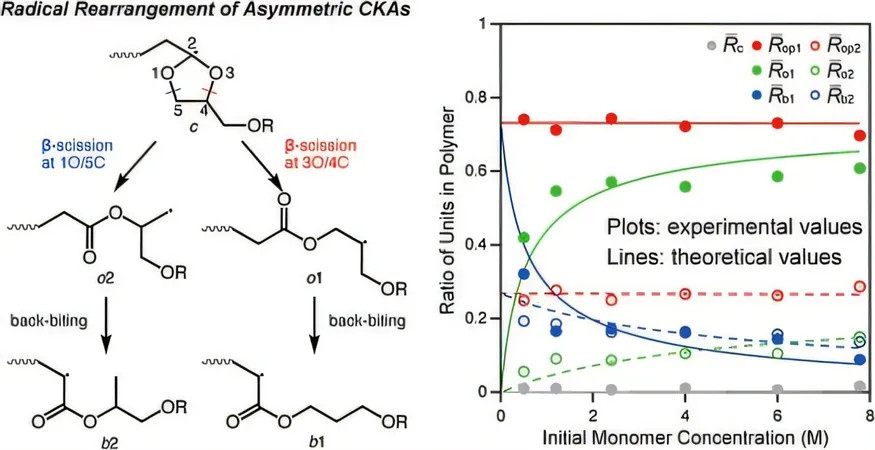
Revolutionizing Hepatitis B Treatment: A Deep Dive into Global Interferon Therapy Research Trends
2025-09-01
Author: Wei
Mapping the Future of Hepatitis B Research
A comprehensive analysis of the latest trends in interferon therapy for chronic hepatitis B (CHB) reveals a booming field ripe with innovation and exploration. From an initial pool of 4,288 records sourced from the prestigious Web of Science Core Collection, a meticulous screening process distilled this down to 2,035 significant studies from 2004 to 2025, crafted by the minds of 11,216 researchers worldwide.
Publication Trends: A Steady Ascent
The trajectory of publications has been nothing short of remarkable. Over the years, from 2004 to 2024, the publication count has shown a persistent increase, with a notable peak of 113 articles in 2021 alone. Notably, a linear regression analysis confirmed this significant upward trend (p < 0.001), promising a thriving future for this vital research area.
Citations: The Most Influential Works
Among the sea of literature, certain articles have risen to prominence. The most cited work, the 'EASL 2017 Clinical Practice Guidelines on hepatitis B management,' stands at the pinnacle with over 4,040 citations. This is followed closely by another priceless resource published in the Journal of Hepatology, underscoring the critical need for updated clinical strategies.
Leading Journals and Their Impact
The landscape of scientific publication favors heavyweight journals like Hepatology and the Journal of Hepatology, setting the standard with high impact factors and substantial citation rates. Together, these journals represent a collective effort that shapes the discourse around hepatitis B treatment.
Countries at the Forefront of Research
China emerges as the clear leader in this research space, contributing a staggering 891 articles, thus highlighting its significant disease burden and dedicated investment in hepatitis research. The USA and Japan follow, yet none can match China's prolific output and citation influence.
Institutional Contributions: Where the Research Happens
Capital Medical University tops the institutional leaderboard, with Fudan University and National Taiwan University not far behind. These institutions not only contribute significantly to publication counts but also foster extensive international collaborations, enhancing the global reach and impact of their research.
Top Researchers: Champions of Hepatitis B Therapy
Dr. Harry L. A. Janssen shines as a leading figure in this domain, showcasing a powerful h-index of 30 and an impressive citation count. His extensive work has greatly propelled our understanding of immune responses and therapeutic strategies, positioning him as a pivotal contributor to the field.
Keyword Trends: Shaping Research Focus
The data reveals distinct thematic clusters guiding current and future research interests. Major clusters focus on immune mechanisms, clinical management strategies, combination therapies, and pharmacological advancements. These clusters shed light on the diverse avenues explored within the realm of interferon therapy for CHB.
Emerging Topics and Future Directions
Analyzing citation bursts from 2004 to 2024 uncovers a shift in research priorities, moving from foundational studies towards optimizing clinical strategies and targeting functional cures. This evolution influences future funding priorities and clinical trials, emphasizing the importance of establishing sustained HBsAg loss as a new therapeutic goal.
Looking Ahead: The Path to Functional Cures
The spotlight is now shifting towards achieving functional cures for CHB. Future studies will likely focus on enhancing treatment regimens, employing innovative combinations with nucleos(t)ide analogs, and leveraging findings to inform precise patient stratification in clinical trials.
Final Thoughts: The Landscape of CHB Research is Evolving
As the body of research on interferon therapy for chronic hepatitis B continues to expand, it is clear that this field is on the brink of significant breakthroughs. Through collaborative efforts, global insights, and unwavering dedication to scientific discovery, the quest for more effective treatments and ultimately, cures for hepatitis B is becoming increasingly attainable.


 Brasil (PT)
Brasil (PT)
 Canada (EN)
Canada (EN)
 Chile (ES)
Chile (ES)
 Česko (CS)
Česko (CS)
 대한민국 (KO)
대한민국 (KO)
 España (ES)
España (ES)
 France (FR)
France (FR)
 Hong Kong (EN)
Hong Kong (EN)
 Italia (IT)
Italia (IT)
 日本 (JA)
日本 (JA)
 Magyarország (HU)
Magyarország (HU)
 Norge (NO)
Norge (NO)
 Polska (PL)
Polska (PL)
 Schweiz (DE)
Schweiz (DE)
 Singapore (EN)
Singapore (EN)
 Sverige (SV)
Sverige (SV)
 Suomi (FI)
Suomi (FI)
 Türkiye (TR)
Türkiye (TR)
 الإمارات العربية المتحدة (AR)
الإمارات العربية المتحدة (AR)